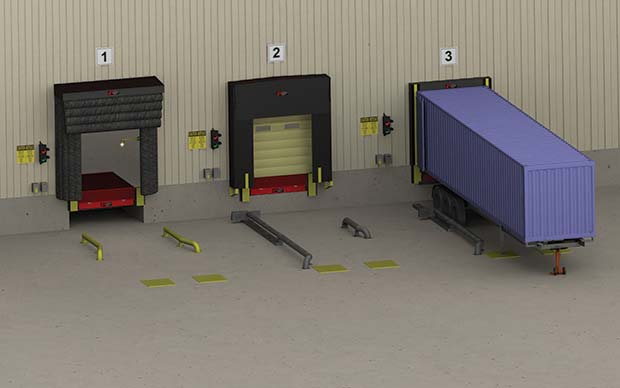Thorworld Industries is calling for loading bay and warehouse managers to view safety in the loading/unloading area not merely as a legal necessity, but as an ‘added value’ proposition that can improve efficiency and generate a significant return on investment (ROI).

According to John Meale, Managing Director of Thorworld Industries, investment in several key safety accessories can easily minimise the most common risks, giving operators peace of mind when loading in order to facilitate a faster and more productive working environment.
“The vehicle loading and unloading area is potentially one of the most hazardous areas in any company, warehouse or distribution centre, yet this need not be the case,” John Meale explains.
“As members of ALEM (Association of Loading and Elevating Equipment Manufacturers) and FEM (The European Materials Handling Federation), we are proud to work alongside our peers in providing best practice on how to minimise risks.
“Indeed, safety is a cornerstone of the FEM Vision & Strategy 2020, the Federation’s manifesto for the future of European materials handling.”
John cites in particular the FEM document, ‘Guidance on Safety On / Around a Vehicle Loading Area,’ as a comprehensive guide to the most common hazards. Available online at http://tinyurl.com/FEM-loading-safety under ‘Free Technical Documents,’ the document is periodically updated as standards and directives change, and as any new technologies and products are launched.
By following the guidance and installing appropriate solutions, loading bay managers can fulfil a number of requirements: the legal and ethical ‘duty of care’ considerations an employer owes to its personnel; removing the costs associated with accidents in terms of damage and downtime, as well as longer-term implications such as higher insurance premiums or legal action; thereby resulting in increased efficiency and productivity. Between these elements, the return on investment is considerable.
Areas covered by the guidance include the use of dock levellers to access any height variation and prevent any horizontal gap between the loading dock and vehicle deck, which can otherwise create a risk of personnel and/or vehicles falling between the two.
Similarly, the document suggests appropriate solutions to prevent the potential for loading apparatus to become unintentionally separated from the vehicle due to creep. Items such as wheel locks or chocks, or complex interlock systems, can quickly and cost-effectively provide a stable, fixed working environment.
Nor is health and safety limited to dramatic one-off incidents; accordingly, the FEM document also offers advice to deal with ongoing situations. Dock seals or shelters, for example, can help to keep out adverse weather and/or maintain an appropriate ambient temperature during loading and unloading. Elsewhere, dock bumpers can prevent sustained damage to both vehicles and the building infrastructure, avoiding hidden long-term safety risks.




Comments are closed.